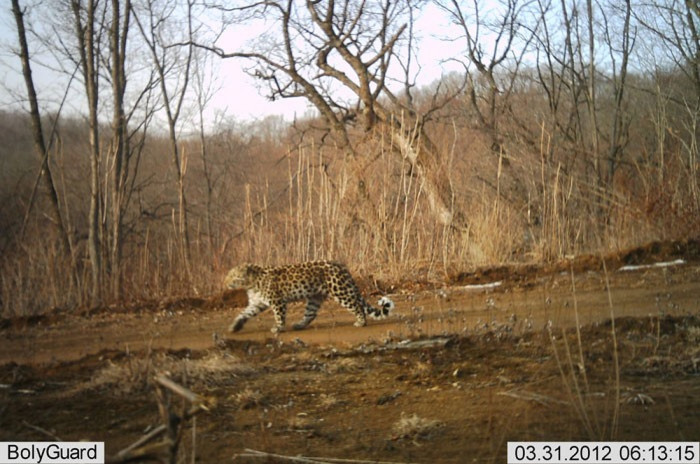Rare Amur Leopard Photographed For First Time In China: 5 Facts About The Endangered Species [PHOTO]

The rare Amur leopard was photographed for the first time by camera traps set up at the Hunchun Amur Tiger National Nature Reserve in northern China, suggesting the endangered species may be returning to the country.
The elusive leopard has been classified as a critically endangered species since 1996. In a 2007 census, the International Union for Conservation of Nature said there were only 14-20 adults and 5-6 cubs alive.
The species was labeled endangered in 1994 by the Union before being upgraded to critically endangered in 1996.
According to the International Union for Conservation of Nature, the Aamur leopard was considered extinct in China and the Korean Peninsula, but recent estimates claim 8 to 12 of them now live near the northern city of Jilin in China.
Camera traps photographed 29 individual leopards at the Land of the Leopard National Park near the Russian-Chinese border, reported UPI.
Staff at the Hunchun Amur Tiger National Nature Reserve set up 16 camera traps where tiger or leopard tracks were found during winter surveys, reported the Wildlife Conservation Society. The remote camera traps snapped pictures of the Amur leopard and tigers.
The WCS, based in New York, said the Amur leopard population may have increased to 40 or more.
Here are five facts about the rare Amur leopard that will help you understand the endangered species a little better:
- The scientific name for the Amur leopard is the Panthera pardus orientalis.
- They have the thickest coats of their subspecies. Their coats vary from season. In the winter they can range from pale cream to a rusty reddish yellow, while their summer coats are brighter and more vivid.
- Amur leopards have become endangered in recent years because of poaching, new roads, exploitation of forests and climate change.
- As of December 2011, there are about 176 captive Amur leopards in zoos worldwide.
- The Amur leopard mainly eats roe and sika deer, small wild boars, hares, badgers, and raccoon dogs.
© Copyright IBTimes 2024. All rights reserved.





















